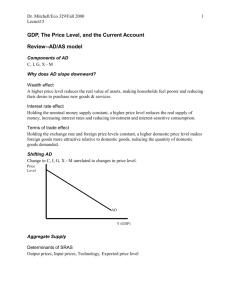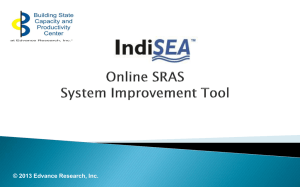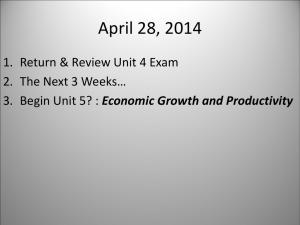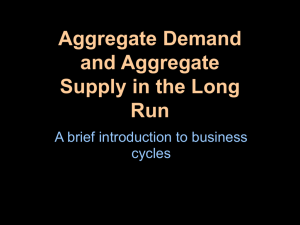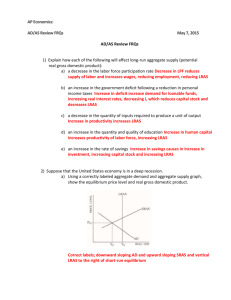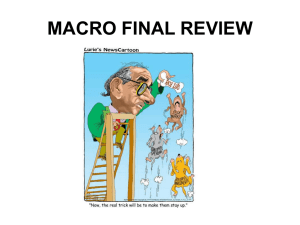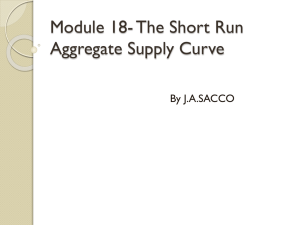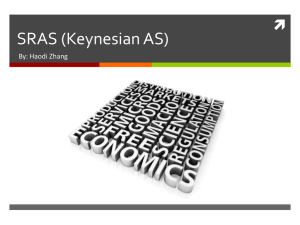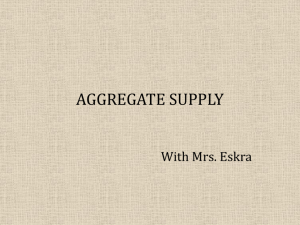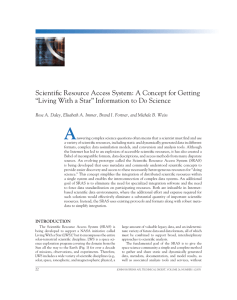Negative Demand Shock
advertisement
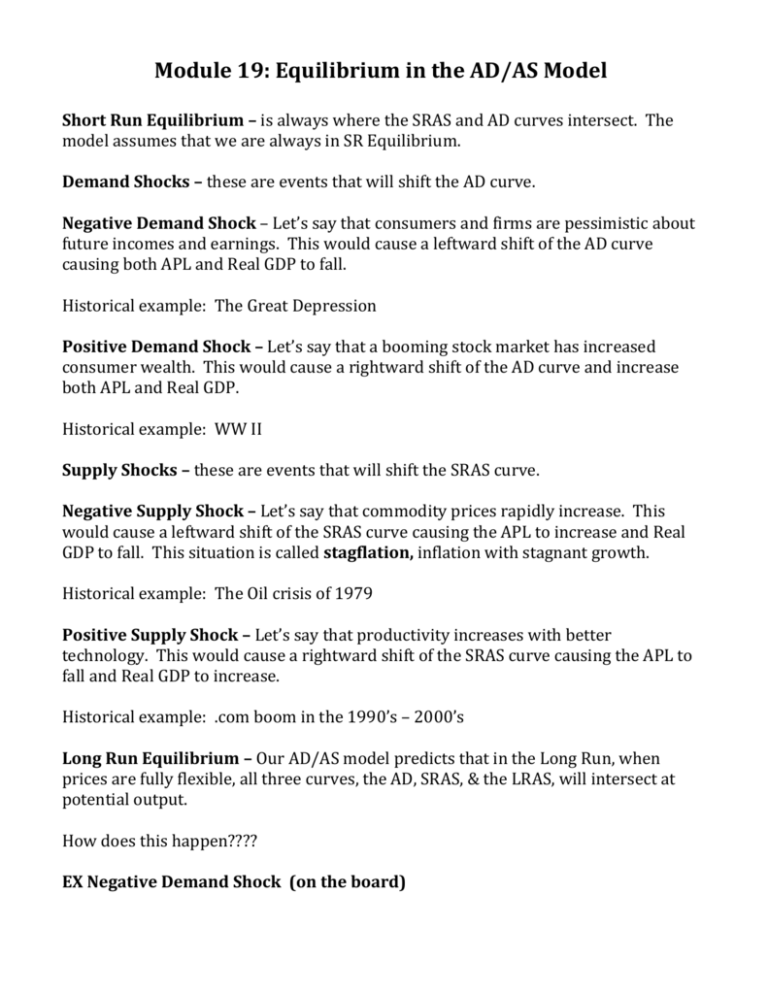
Module 19: Equilibrium in the AD/AS Model Short Run Equilibrium – is always where the SRAS and AD curves intersect. The model assumes that we are always in SR Equilibrium. Demand Shocks – these are events that will shift the AD curve. Negative Demand Shock – Let’s say that consumers and firms are pessimistic about future incomes and earnings. This would cause a leftward shift of the AD curve causing both APL and Real GDP to fall. Historical example: The Great Depression Positive Demand Shock – Let’s say that a booming stock market has increased consumer wealth. This would cause a rightward shift of the AD curve and increase both APL and Real GDP. Historical example: WW II Supply Shocks – these are events that will shift the SRAS curve. Negative Supply Shock – Let’s say that commodity prices rapidly increase. This would cause a leftward shift of the SRAS curve causing the APL to increase and Real GDP to fall. This situation is called stagflation, inflation with stagnant growth. Historical example: The Oil crisis of 1979 Positive Supply Shock – Let’s say that productivity increases with better technology. This would cause a rightward shift of the SRAS curve causing the APL to fall and Real GDP to increase. Historical example: .com boom in the 1990’s – 2000’s Long Run Equilibrium – Our AD/AS model predicts that in the Long Run, when prices are fully flexible, all three curves, the AD, SRAS, & the LRAS, will intersect at potential output. How does this happen???? EX Negative Demand Shock (on the board) After AD has shifted to the left we have what is called recessionary gap. That is Real GDP has fallen below potential output and thus we will experience unemployment and our economy is not working to its potential. Due to the poor economy, the labor market falters and unemployment rises, leading nominal wages to fall. This will cause SRAS to shift to the right because costs to businesses have been cut and it is now more profitable to supply products. Over time, real GDP will rise due to the shift of SRAS and EQ will move back toward LRAS. Once it reaches the LRAS curve, we are back to LR EQ. What happens to the APL & Real GDP? If it were a Positive Demand Shock, the opposite would happen! AD would shift to the right causing an inflationary gap. That is when Real GDP has exceeded potential output causing inflation (notice APL is rising). The labor market strengthens and nominal wages increase. That causes costs to rise for businesses and thus they decide to decrease production (SRAS shifts left). Over time, SRAS shifts back to LRAS where LR EQ will be reached again when all three curves intersect at potential output again. Recessionary Gap: when the output gap is negative, nominal wages eventually fall, moving the economy back to potential output and the output gap to zero. Inflationary Gap: when the output gap is positive, nominal wages eventually rise, moving the economy back to potential output and the output gap to zero. In the Long Run, the economy is self-correcting: shocks to AD affect output in the short run but NOT in the long run. Helpful hints: 1. 2. 3. 4. SR EQ is where SRAS & AD intersect. LR EQ is where all 3, SRAS, AD, & LRAS intersect. Shocks move us away from LRAS but we always move back toward it. Nominal wages will always follow the APL in the LR.

